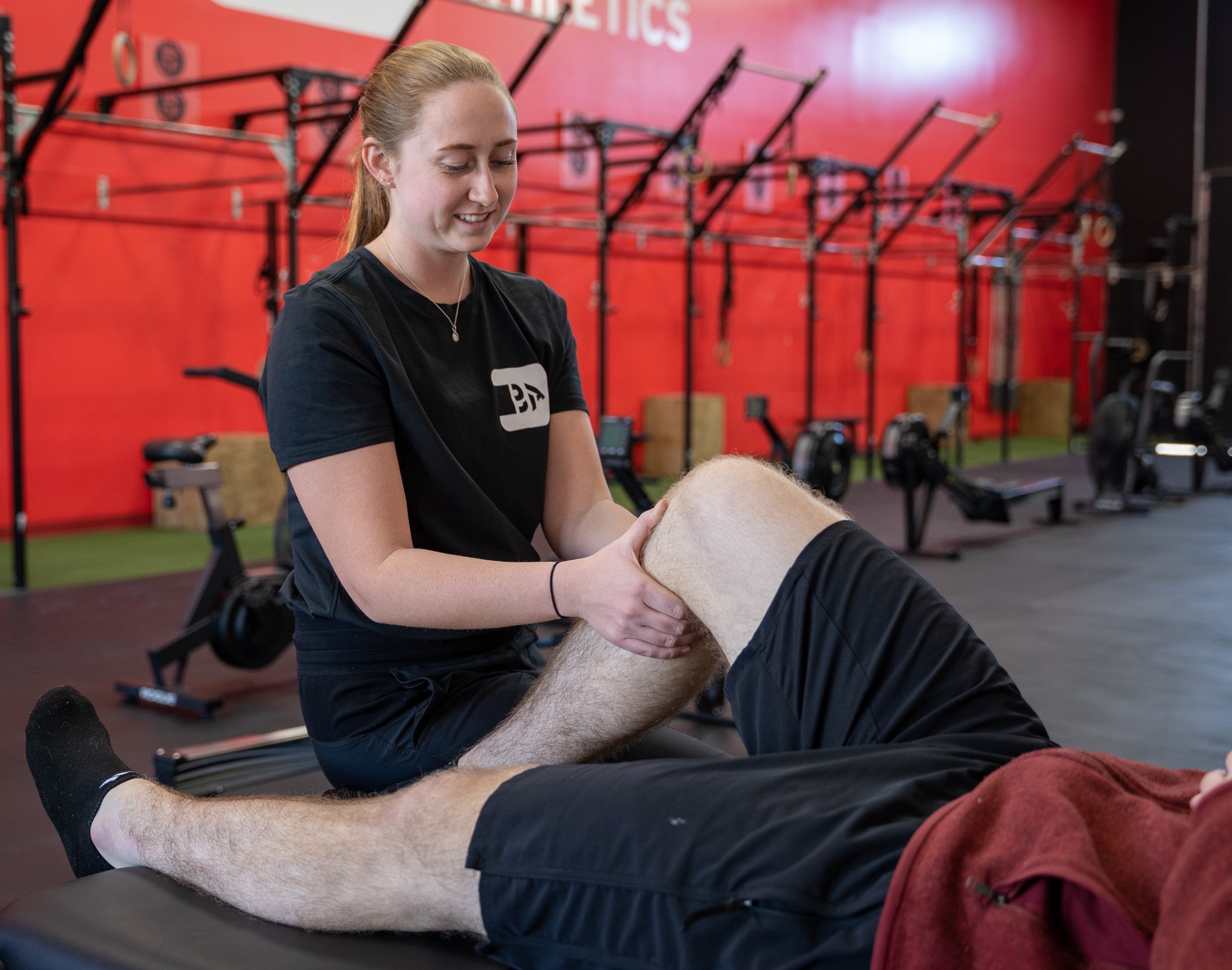Say Goodbye to Aches and Pains
Introducing Athletic Therapy at Blended Athletics
By Caitlyn Gerry, CAT(C)
This spring, let’s address that nagging pain that has been holding you back from training. Hi, I’m Caitlyn Gerry, a Certified Athletic Therapist providing clinical treatment at Blended Athletics. Let me tell you about what I do and how I can help you.
Athletic Therapists (ATs) are health care providers specialized in musculoskeletal injury prevention, assessment and management. The term musculoskeletal includes bones, ligaments, tendons, joints and muscles. Athletic Therapists graduate from an accredited institution, pass a National Certification Exam, and maintain a Medical First Responder certification.
ATs are traditionally found working with professional and varsity teams attending the team’s games and practices to respond to, manage, and quickly return athletes from injury during play. This is called field work. But, ATs also work clinically in settings similar to physiotherapists and chiropractors. Performing assessments and using modalities and manual therapy to prevent and treat injuries or conditions.
Our bodies are constantly performing movements that require strength, agility, endurance and power. These physical demands are similar to those placed on athletes in sports. That’s why one of my favorite quotes I use in my practice as an AT is from the co-founder of Nike, Bill Bauerman. He said “If you have a body, you are an athlete,” and I wholeheartedly agree with him. Whether you are playing in an organized sports league, taking your dog for a walk or playing with the kids, you are an athlete.
Aches and pains often hinder us poor athletes. Exercising puts stress on our bodies that we are not accustomed to, obviously, that’s why we do it and become stronger. However, this can occasionally cause issues in our muscles and joints to flare up which may present as physical pain. Sometimes this pain can take us out of class or force us to modify or even stop our daily activities a lot more and for a lot longer than we’d like.
Occasionally these discomforts heal well without the need for intervention which is wonderful. But more often than not, hoping that an injury will just ‘go away’ is wishful thinking. If you’ve been putting off addressing a weird pain or haven’t fully healed from an injury that is continuously bothering you, it would be a good time to see an Athletic Therapist.
In my assessments as an AT, I use an organized approach to gather relevant background information on general health and injury specific information such as the history, location, sensations, limiting movements and much more. From there, I use observation to assess body alignment, asymmetries and soft tissue abnormalities. Assessments will also consist of methodologically pressing the skin to feel the tissues underneath, also called palpation, and special tests that stress the integrity of specific structures. From an assessment, I will be able to identify what tissues are injured and can then create a plan for your rehabilitation.
Some common injuries that I can treat include muscle strains, ligament sprains, low back pain, tendonitis including knee and rotator cuff, concussions and so much more. I can also help determine the root cause of other chronic conditions such as plantar fasciitis, shin splints, restriction in range of motion, and recurring acute injuries.
Athletic Therapists use plenty of hands-on therapy techniques and therapeutic exercise (backed by scientific evidence, of course) to help tissues heal properly and as quickly as possible. ATs take what is called a holistic approach to injury management. I understand that all joints in the body are connected and while addressing the area of pain is important, the rest of the body needs to be considered and treated to ensure that the injury heals fully and does not reoccur.
Additionally, I understand that taking time off from the activities that you love has implications on quality of life and mental health. Psychological considerations to returning to activity, such as the state of readiness to return and confidence in the injured area, are incredibly important to address. Providing education on your injury and giving you autonomy in the rehab process is also a large part of my practice. With this new understanding of how your body works and how you can help yourself heal, you will be back to normal in no time.
If you are tired of being held back by pain or discomfort during exercise, an initial assessment with me is a great first step to getting back to your training and your regular daily activities. Through an assessment, I can help you recover from injury and prevent future ones so that you can get back to doing what you love.


